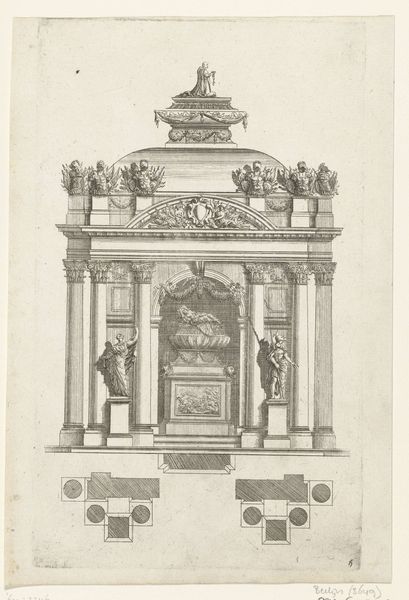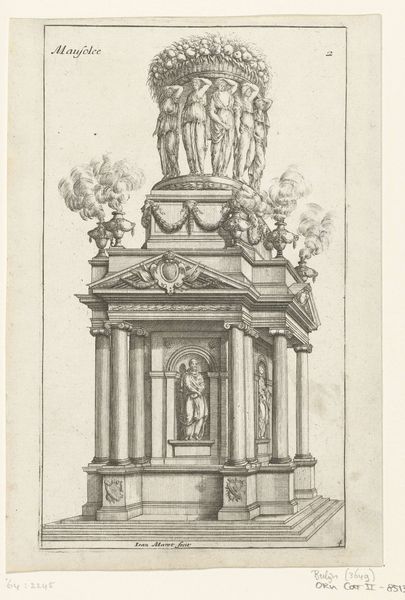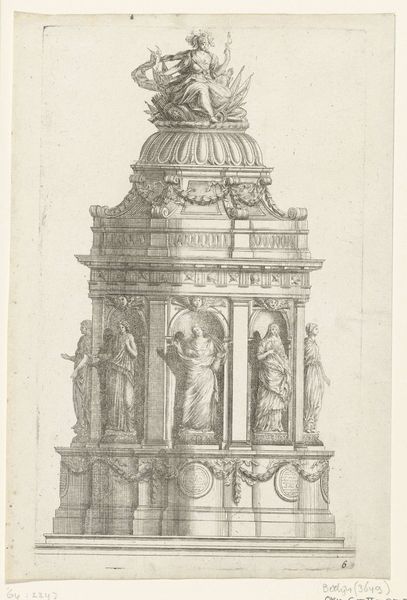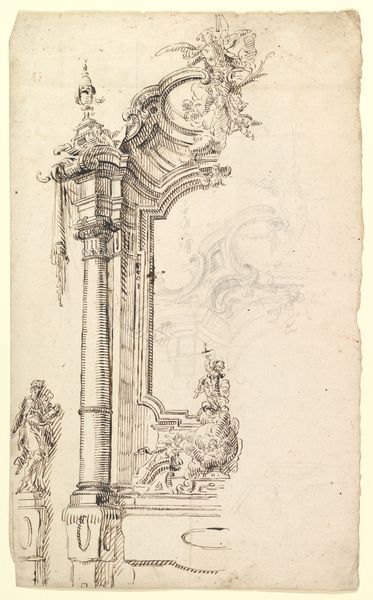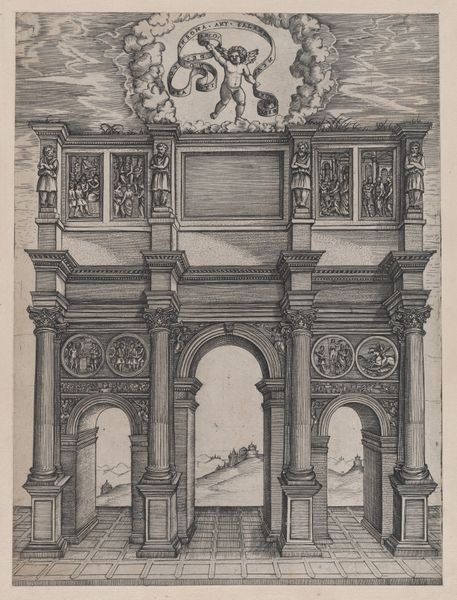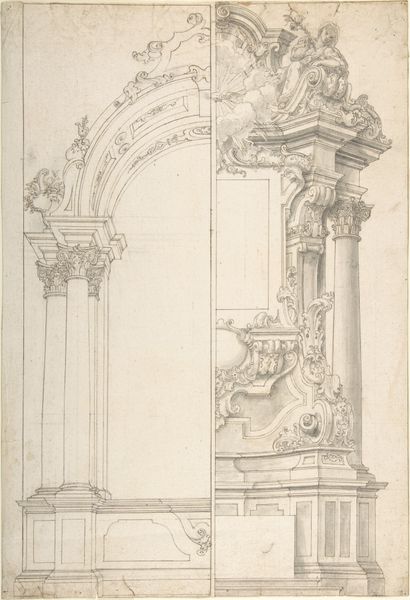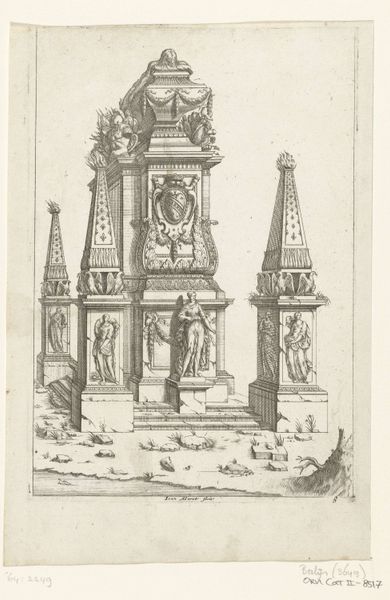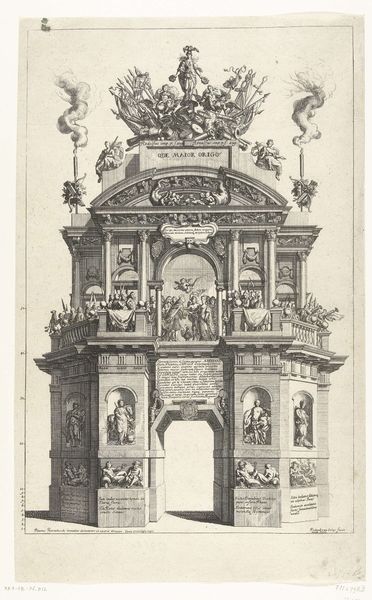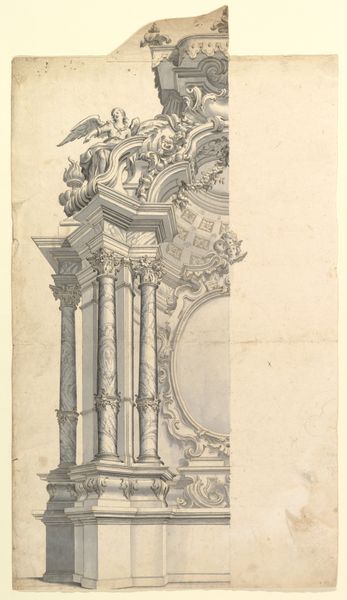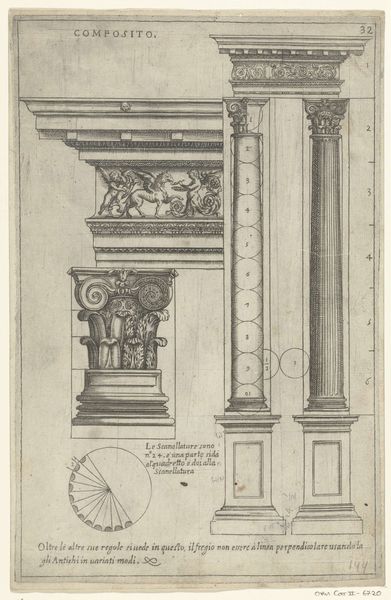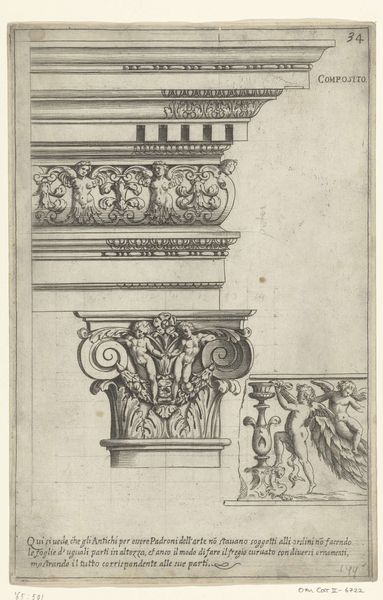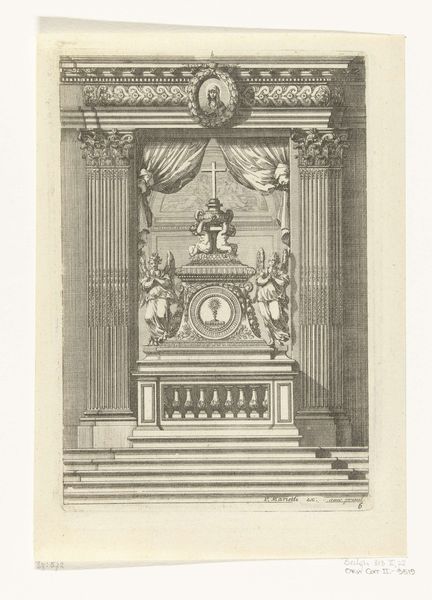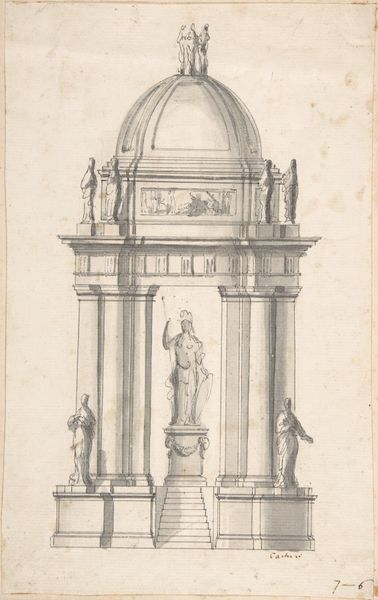
drawing, print, engraving, architecture
#
drawing
#
baroque
# print
#
old engraving style
#
cityscape
#
engraving
#
architecture
Dimensions: height 210 mm, width 133 mm
Copyright: Rijks Museum: Open Domain
Jean Marot created this two-tiered sepulchral monument etching in the mid-17th century. Reflecting the absolutist grandeur of Louis XIV’s France, the monument’s design illustrates how power and identity extended even into death. Marot, as an engraver and architect, was deeply embedded in the cultural aesthetics of his time. His designs often catered to the aristocracy, shaping their self-image through art. This monument, with its classical columns and ornate sculptures, speaks to the era's obsession with lineage and legacy. Yet, such displays of grandeur were often at the expense of the common people, underscoring the deep class divisions within French society. Consider the emotional weight of such a structure. It is not merely stone and design but a statement about life, death, and remembrance. Does it inspire awe, or does it remind us of the inequalities inherent in societies where even death is a stage for social hierarchy?
Comments
No comments
Be the first to comment and join the conversation on the ultimate creative platform.
